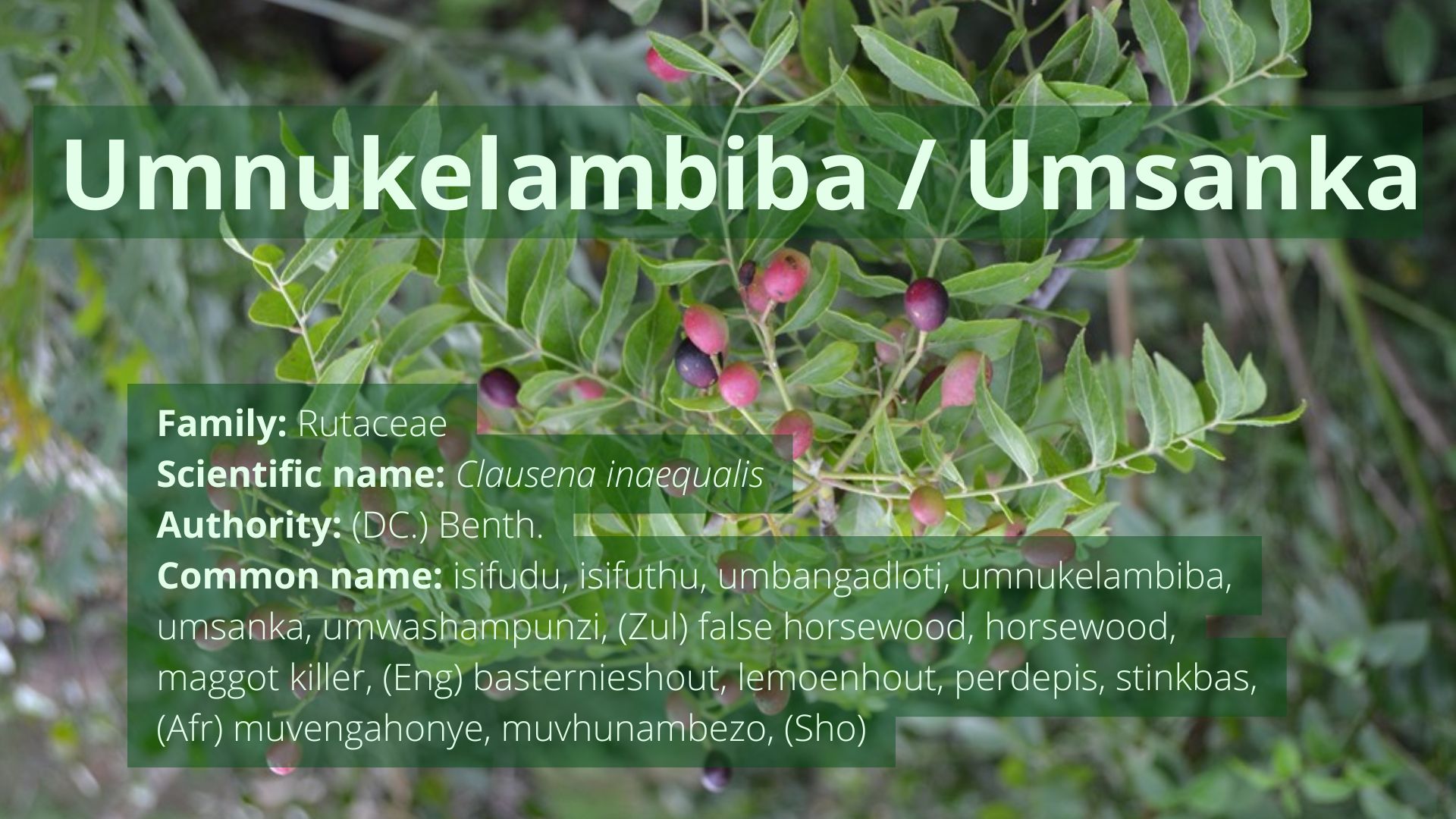Family: Rutaceae
Scientific name: Clausena inaequalis
Authority: (DC.) Benth.
Synonyms: Amyris anisata Willd., Clausena abyssinica (Engl.) Engl., Clausena anisata (Willd.) Hook.f.ex Benth., Clausena dentata (Willd.) M.Roem.,
Common names: false horsewood, horsewood, maggot killer, (English) basternieshout, lemoenhout, perdepis, stinkbas, (Afrikaans) isifudu, isifuthu, umbangadloti, umnukelambiba, umsanka, umwashampunzi, (Zulu) muvengahonye, (Shona) muvhunambezo, (Shona)
Description:
C. inaequalis is a deciduous shrub (or small tree) that grows on the margins of the evergreen forest. The pinnately compound leaves with leaflets that have a strong aniseed scent when crushed and small white with orange-yellow flowers with a branched axillary inflorescence.
Uses:
- The leaves are cooked and eaten as food.
- The leaf-powder is mixed with honey and eaten.
- The leaf-powder is smeared on the snakebite.
- The leaves are boiled with rock salt and taken as tea.
- The leaves are crushed and packed onto the wounds of animals to expel maggots.
- The leaves are smoked as fumigant against pests and insects such as: flies, mosquitoes, and weevils. The smoke is an insecticide against stored-grain pests.
- The leaves are used against intestinal worms in animals or humans.
- The leaves are taken as umuthi omhlophe.
- The root powder is inhaled for evil eye.
- The roots are chewed or the powder added in soup that woman drinks menstrual disorder.
- The twigs are used for herbal steam therapy for spirits.
- The fruits and leaves are chewed for hysteria.
Reference and further research:
- Bussmann, R.W., Paniagua-Zambrana, N.Y. and Njoroge, G.N., 2021. Clausena anisata (Willd.) Hook. f. ex Benth. Rutaceae. In Ethnobotany of the Mountain Regions of Africa (pp. 289-291). Cham: Springer International Publishing.
- Chavunduka, 1976
- Meijer, T.M., 1947. The essential oil from the leaves of clausena anisata Hook. f. Recueil des Travaux Chimiques des Pays‐Bas, 66(6), pp.395-400.
- Mukandiwa, L., Naidoo, V. and Katerere, D.R., 2016. The use of Clausena anisata in insect pest control in Africa: A review. Journal of ethnopharmacology, 194, pp.1103-1111.
- Ntombela, S.A., 2019. Nicknaming among the Zulu: the case of naming medicinal plants. Nomina Africana: Journal of African Onomastics, 33(1), pp.47-59.
- Omara, T., Kiprop, A.K., Kosgei, V.J. and Kagoya, S., 2022. Clausena anisata (Willd.) Hook. f. ex Benth.(Rutaceae): ethnomedicinal uses, phytochemistry, pharmacological activities, toxicity, and clinical application.
- Pettey, F.W., 1924. South African psyllids.
- Rycroft, H.B., 1944. The Karkloof Forest Natal. Journal of the South African Forestry Association, 11(1), pp.14-25.

